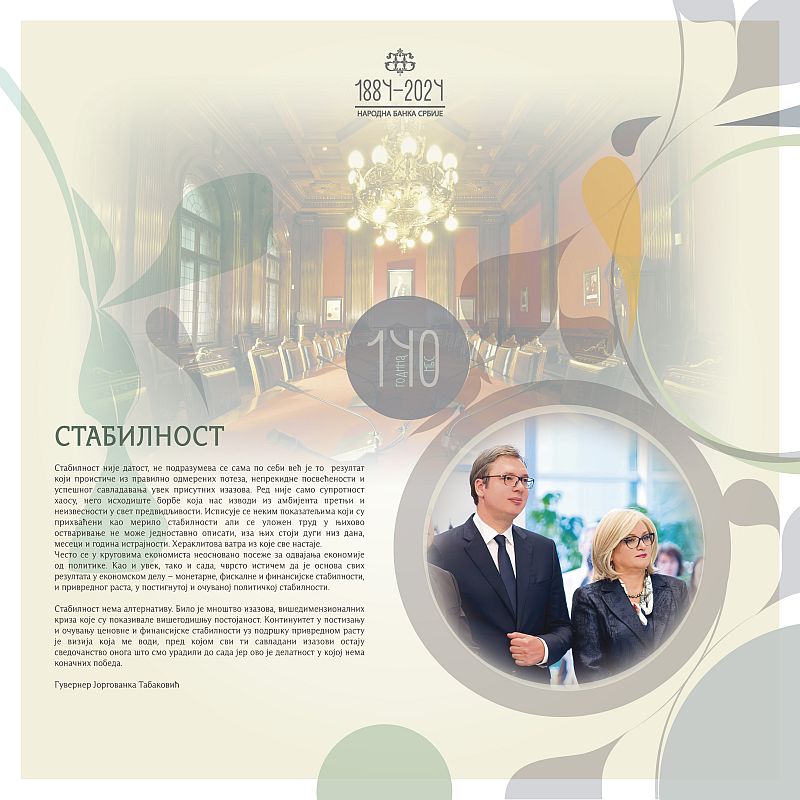The NBS Head Office Building was built from 1888 – 1890, on the basis of blueprints designed by Konstantin Jovanovic (Vienna 1849 – Zurich 1923), son to distinguished artist Anastas Jovanovic...

Over the past 12 years, Serbia has traversed the path from a country plagued by monetary and financial instability and uncertainty to a country with inflation levels comparable to those of advanced economies, a stable currency, a record-high level of foreign exchange reserves, and a stable financial system.
By pursuing an appropriate monetary policy, we reduced inflation by 10 pp within a year – from 12.2% at end-2012 to 2.2% at end-2013.
Inflation was kept continuously low, resulting in a long period of low-cost borrowing by households and corporates. Inflation was maintained at a low level from end-2013 until end-2021 (around eight years), when global inflationary pressures escalated. Thanks to the achieved and preserved price stability, we had several years of low interest rates on dinar loans (the key policy rate was lowered from the inherited 11.75% in 2012 to 1% at end-2020), resulting in lower costs of borrowing for households and corporates.
Since December 2012, the NBS has conducted its main open market operations – reverse repo operations (repo sale of treasury bills) through which it mops up excess dinar liquidity on a weekly basis – according to the system of multiple variable rates. This system has allowed the NBS greater flexibility and efficiency in monetary policy implementation over 12 years.
Inflationary pressures were reined in. As a result of multiple global crises, inflation was imported into Serbia over the past few years in the wake of the pandemic and several global conflicts, and its different nature called for a different response of the Government and the NBS – a continuous, but gradual response. The NBS did everything in its power to protect households’ living standards without compromising economic growth. Thanks to this, inflation has been on a stable downward path since April 2023 and is now more than three times below its peak of March 2023, which we have consistently projected. It retreated within the target band of 3±1.5% in May 2024 (4.5%) and is expected to approach the target midpoint of 3% during 2025.
* The latest available data at the moment of the preparation of the brochure.